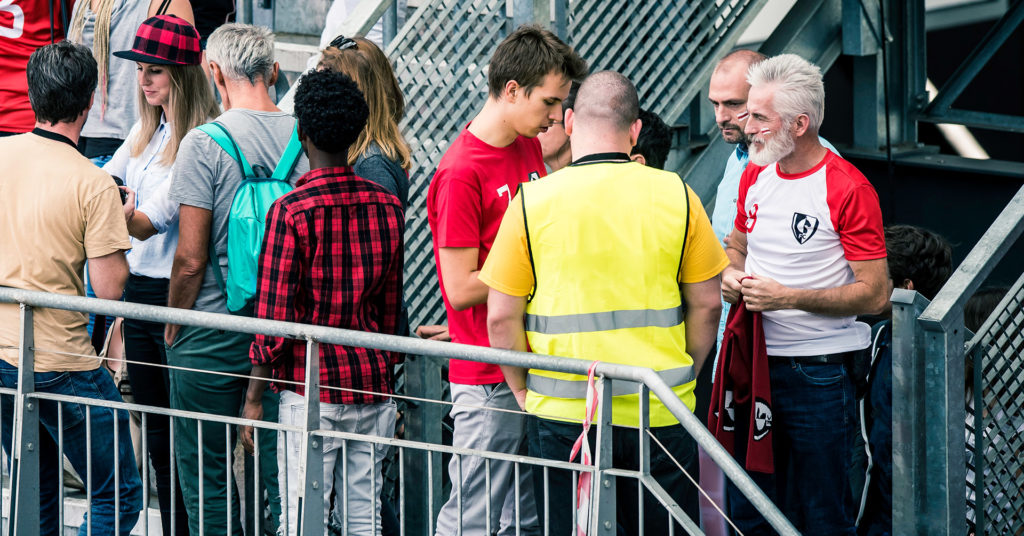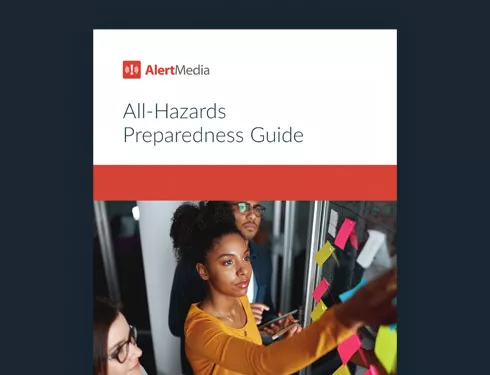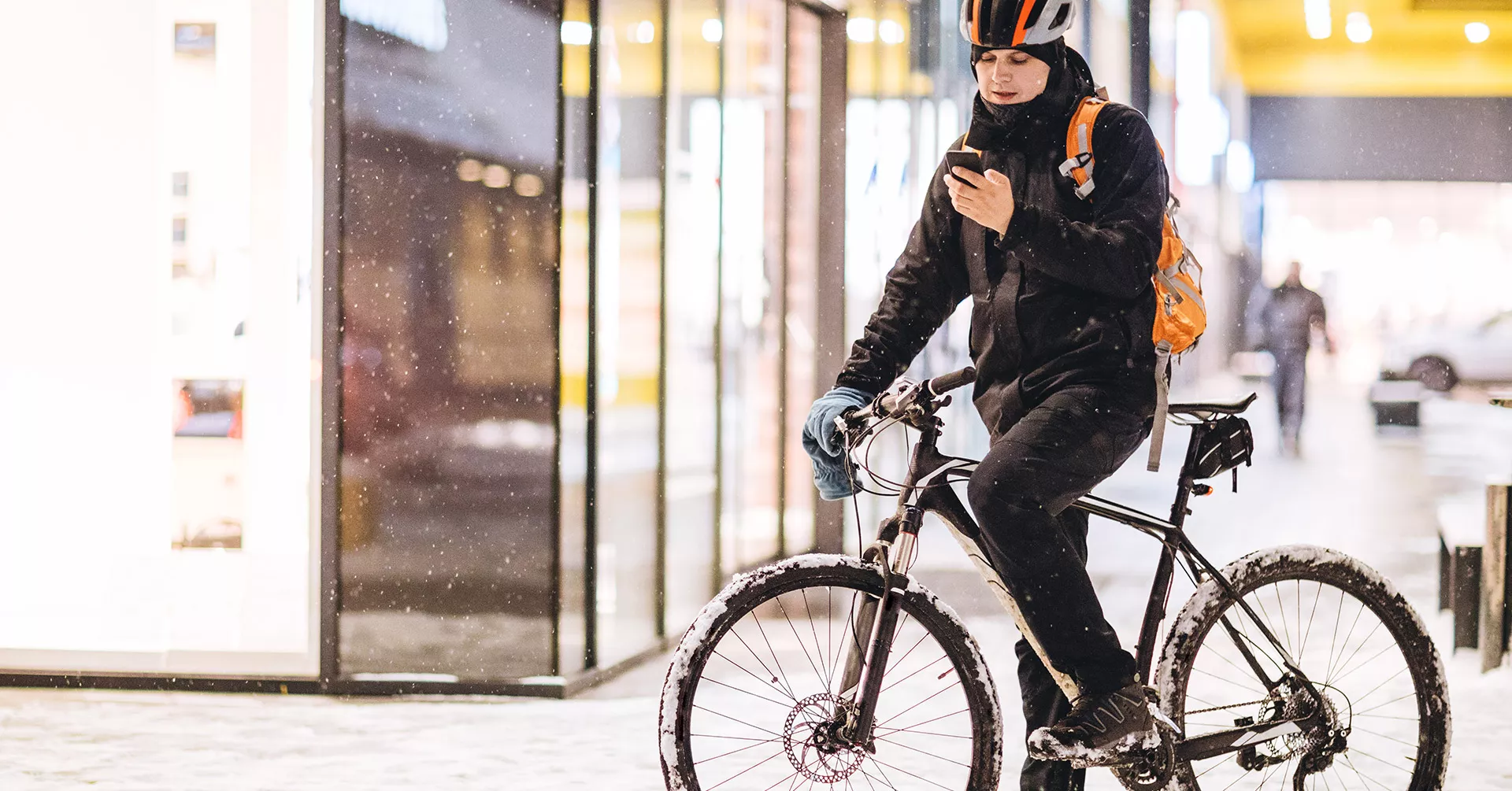
How the Vegas Golden Knights Manage Security On and Off the Ice
Joanna Packard, Director of Safety and Security for the Vegas Golden Knights, shares what it’s like to secure these facilities and protect thousands of fans, guests, and employees during hockey season and year-round.

Managing safety and security for the Vegas Golden Knights is a huge job. It involves safeguarding their NHL and AHL arenas, as well as the restaurants, coffee shops, and retail stores contained therein.
Joanna Packard, Director of Safety and Security for the Golden Knights, recently joined us on The Employee Safety Podcast to explain what it’s like to secure these facilities and protect thousands of fans, guests, and employees during hockey season and year-round.
Prior to joining the Golden Knights, Joanna served as a Corporate Investigator for luxury resort Wynn and Encore Las Vegas protecting the casinos from all criminal activity, including civil and criminal fraud, embezzlement, alleged misconduct, violent acts, terrorist threats, organized crime, and suspicious activity by patrons or employees.
You can listen to the episode below.
Q&A With Joanna Packard, Director of Safety and Security for the Golden Knights
What are your responsibilities within the organization?
Every day is different. I oversee two different arenas—our AHL arena and our NHL arena. We’ve got two restaurants, two coffee shops, and two retail spaces inside both of those entities. Our main priority is the safety and security of our guests, employees, and facilities. We do that through surveillance control, access control, and physical security being boots on the ground. We also handle all the first aid or ice injury incidents. From altercations, retail incidents, and capacity limits to emergency exits and alcohol challenges, you name it, and we’ve got it all here.
Do you have other events at your facilities besides hockey games?
Yes, every day we’ve got different events at the arena, including public skating events, hockey tournaments, figure skating competitions, and special events or birthday parties. We also partner with the city of Las Vegas to host events, so there’s a lot more going on here than just the actual team playing on the ice.
What are some examples of the safety and security challenges you face with such varying events and audiences?
Everything depends on the event. For example, if we’ve got a tournament going on, there are players on the ice, but their friends are often hanging out in the visitor or team bench area where there’s no protection. They don’t have a helmet on, and so we have to keep an eye out for those potential risks. Another example could be a little girl heading out on the ice for the first time to learn how to skate and she gets their hand caught in the ice skating door.
““Our main priority is the safety and security of our guests, employees, and facilities.””Joanna Packard Director of Safety and Security for the Vegas Golden Knights
To mitigate these different scenarios, you have to analyze what happened and identify opportunities for change and improvement. For example, for public skates, all the rink doors are always left open to prevent injuries. They’re not supposed to be closed, so to anybody that’s tampering with those doors, we kindly tell them they can’t do that for safety purposes. If we see somebody standing in an area where they’re not supposed to, we go up to them and let them know why they can’t be here. It’s a day-to-day mitigation effort and each incident is different.
I imagine there’s a lot of nuance involved in preparing for each one of these events. How do you and your team handle that?
A lot of it is repetition. When we’ve repeatedly had all of these events, we know how to set them up, and we know where our weaknesses are. If there are any vulnerable points, we stack up security in those areas. If we know we’re going to have a high presence in the retail area, then we’ll stack security there. It’s just understanding the crowd that’s coming in—what type of demographic it’s going to bring, how many people, etc.
Sometimes we’ll have celebrities come in, but we also have high-profile hockey players. This means we have to keep an eye out for hockey fans. Most of the time, they’re harmless, but we have different security measures we can put in play, and because of COVID protocols, there are certain distances we have to keep in mind as well.
What is something you think an average person would be surprised to learn about your job?
From major injuries and cyber risks to unruly guests and theft, people are often shocked to hear about all the events that go on in the hockey world. We have a very family-friendly arena, but we’ve had some brutal ice injuries that come out of the rink from even basic skating sessions. Luckily, we are contracted out with an ambulance service company, and we have fire and medic right around the corner, just blocks from both of our arenas. Anytime we need assistance, they’re here within less than 20 minutes.
We’ve talked about the many different incidents you and your team prepare for and respond to. Thinking back over your time with the Golden Knights, is there a specific day on the job that you are most proud of or that provided you with the biggest learning experiences?
My first week with the Vegas Golden Knights, I was just getting acclimated when our fire evacuation alarm went off. At the time, I didn’t even know where our fire panel was. People were evacuating the arena and sort of looking at me because I had just been introduced as the new security director, and I felt so silly. It turned out to be a blessing in disguise because now I know everything about the arena’s fire system! It also kicked off creating policies and procedures to get our staff trained on where all of our equipment is and what our biggest priorities in the arena are.
That same week, I got a call about a hazmat situation at our AHL arena. In our arena, we have refrigeration systems to keep the ice cool. Some of the ammonia leaked out, and our alarms had gone off. There was an issue with our HVAC system where some of the dampers didn’t close. Long story short, where the ammonia was supposed to be exiting the arena, it was being filtered back in by our HVAC unit. It was a very negligible amount, but it spread through the arena, so we had to close it down and evacuate. Overall, it was a good thing that these events happened because we’ve got a lot of different measures in place now that we didn’t have before.
How does your background in investigation and crisis management help you in your day-to-day responsibilities at your job?
If I didn’t have the training or go through my Master’s program, I wouldn’t be qualified for this job. There’s so much of my job that involves policies and procedures. On a daily basis. I’m reviewing permits, going through OSHA regulations, understanding how to create emergency action plans and evacuation plans, and knowing what to do in a hazmat situation. All of that was covered in my education, and without that knowledge, I wouldn’t be leading by example.
What can someone do to improve facility security at their companies?
I’m constantly researching and reading about different events that have occurred around the country to learn from their experiences. We do a lot of after action reports anytime we have an event. If there’s a challenge that we face, we all come together afterward to discuss how we can avoid it in the future. Having open communication and always being willing to learn is the best advice that I can give.





